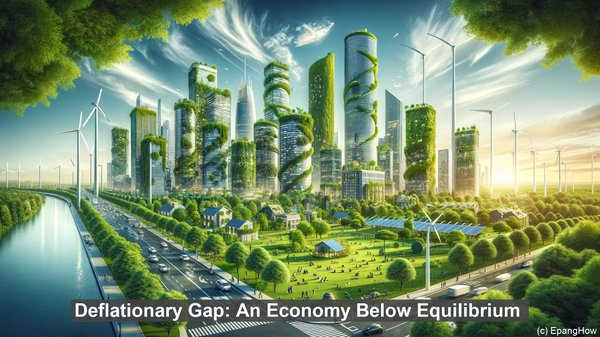Introduction: Economic Fluctuations and Gaps
Hello everyone, and welcome to today’s article. In the field of macroeconomics, we often encounter situations where the economy is not operating at its full potential. These situations are known as economic gaps. Today, we’ll be focusing on two specific types of gaps: the deflationary gap and the inflationary gap. While both represent imbalances in the economy, they have distinct characteristics and implications. Let’s dive in!

Deflationary Gap: An Economy Below Equilibrium
The deflationary gap occurs when the aggregate demand in an economy falls short of the aggregate supply at the full employment level. In simpler terms, it’s a situation where the economy is producing less than its potential. This can happen due to various factors, such as a decrease in consumer spending, a decline in business investments, or a decrease in government expenditure. The result is a decrease in overall economic activity, leading to unemployment and a decline in prices.

Implications of the Deflationary Gap
The deflationary gap has significant implications for an economy. One of the most immediate effects is the rise in unemployment. When businesses produce less, they require fewer workers, leading to layoffs and job losses. This, in turn, reduces consumer spending power, creating a vicious cycle of decreased demand and further economic contraction. Additionally, the deflationary gap often leads to a decrease in prices, as businesses try to attract the limited consumer demand. While this may seem beneficial at first, it can result in a phenomenon called ‘deflationary spiral,’ where falling prices lead to further decreases in demand, worsening the economic situation.
Inflationary Gap: An Economy Above Equilibrium
On the other end of the spectrum, we have the inflationary gap. This occurs when the aggregate demand exceeds the aggregate supply at the full employment level. In simple terms, it’s a situation where the economy is producing more than its potential. This can happen due to factors such as increased consumer spending, high business investments, or a surge in government expenditure. The result is an increase in overall economic activity, leading to labor shortages and a rise in prices.
Implications of the Inflationary Gap
The inflationary gap, like its counterpart, has significant implications. One of the most immediate effects is the rise in prices, often referred to as inflation. As businesses produce more, they require additional resources, such as labor and raw materials. This increased demand for resources drives up their prices, leading to a general increase in the cost of goods and services. Inflation, if not managed properly, can erode the purchasing power of individuals and create economic instability. To counteract the inflationary gap, policymakers often employ measures such as increasing interest rates or reducing government spending to decrease aggregate demand and bring the economy back to equilibrium.
